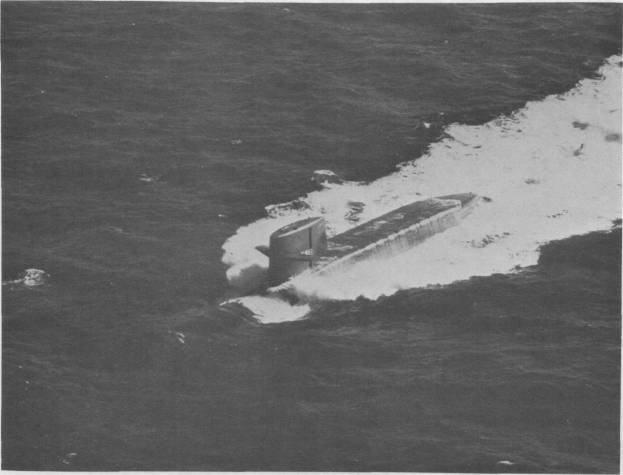LFH Overview
Polaris Lessons in Risk Management Page
Polaris
Lessons in Risk Management
SummaryRisk management is one of the most important subjects in today’s management and project management environment. Good risk management or poor risk management can mean the difference between success and failure on a project. Good risk management allows organizations to proactively respond to risks. Further, it allows organizations to manage risks better that do occur. Unfortunately, many managers and project managers believe risk management to be too difficult, too time consuming, or too complicated to do. Some find it to be shrouded in mystery. Polaris: Lessons in Risk Management is designed to make risk management easier, less time consuming to perform. Thus allowing organizations to improve their performance in this critical area. This book covers methods listed in the Project Management Book of Knowledge (PMBOK) Guide® and many newer methods not listed. The book explains each method and provides examples based on the Polaris submarine project.
|

BackgroundThe book follows the Polaris missile and submarine program of the last 1950s. The Polaris project designed and developed the Polaris missile and the George Washington class submarine. This project was considered by many as impossible. Application of proper risk management techniques assisted greatly in the success of this project. The Polaris project revolutionized undersea warfare. This book utilizes the Polaris project as a backdrop for examples of modern day risk management. In this way, readers can see practical examples of how various risk management techniques are applied in modern risk management. Thus this book tears away at some of the clouds that surround the concept of risk management.
Problems Addressed by the BookThis book is designed to help with:
Overview of the BookThe Polaris Fleet Ballistic Missile Program began in the mid 1950s. It was an outgrowth of the Cold War that had begun a few years earlier. At the time there was much concern in the United States that the Soviet Union had surpassed them in a number of critical technological, scientific, and military areas. As the Cold War continued to heat up, some saw nuclear war on the horizon. From this concern, it was determined a new weapons system needed to be developed that could not be knocked out by a nuclear first strike from the Soviet Union. Hence, Polaris was started. It progressed quite slowly at first, as no one really backed the project in its infant stage.
Polaris had a few challenges to be overcome in order for it to be successful. For one, no such missile capable of meeting the necessary requirements existed. Some wondered if such a missile was even possible. Second, no submarine had been designed to carry such a large missile if such a missile was possible. Third, no launch system existed capable of firing such a missile from a submerged submarine. Fourth, no guidance system existed to guide such a missile to the target. Such a missile needed to fly thousands of miles to the target. No accurate guidance system existed at the time. Needless to say, there were more than a few critical risks in this project.
But in the end, this book is about risk management. This book does not simply state what techniques are nor does it go into chapter after chapter on statistics. Instead, the book explains modern risk management techniques and provides easy to follow examples of each technique using the Polaris Project. This book was designed for business professionals, managers, and project managers as an easy to understand guide to risk management. |
|
|
Polaris got its reality check when the Soviet Union launched Sputnik in 1957. Sputnik was the first artificial satellite launched into orbit in world history. All of a sudden this concern about the Soviet Union turned into fear and a bit of humiliation for the United States. The Soviet Union had one upped the United States in a very dangerous way. The Polaris Project now needed to progress much, much faster.
This book looks at the Polaris Project through the eyes of modern day risk management using modern day risk management techniques. In this way, I attempt to demonstrate the effective use of risk management in the modern world. As seen by the recent Great Recession, risk management today could use some help. I believe much of this is because risk management is seen as a difficult concept to master. Proper application of risk management techniques on a project increases the likelihood of meeting schedule and cost constraints. This, in turn, usually leads to more successful projects. Polaris was a perfect example of just this!
Many of today’s modern risk management techniques actually got their start on the Polaris Project. One such is the Program Evaluation and Review Technique (PERT). PERT was instrumental in guiding this project to success. Once Sputnik was launched, it was clear a method was needed to assist in enabling a successful completion of this project.
PERT and effective risk management techniques assisted the Polaris Project in becoming one of the best ran programs in the United States Department of Defense history. The Polaris Project overcame all of its technical risks and amazingly enough finished three years ahead of schedule.
Unfortunately, the Polaris project never really got its due respect for what it accomplished. The project was overshadowed by the Mercury, Gemini, and the Apollo space programs. These other programs led to man’s landing on the moon. An incredible achievement in and of itself! However, submarines based on refinements of the original Polaris design still prowl the seas whereas we have not been to the moon in almost 40 years.
|
|
This book is for people looking for inspiration for their projects, whether responsible for funding and approving new projects, to delivering these successfully. Its goal is to help a project team set up a project, even in dire circumstances, and become successful.
Photos: Courtesy of the U.S. Air Force Academy Library's Special Collections




